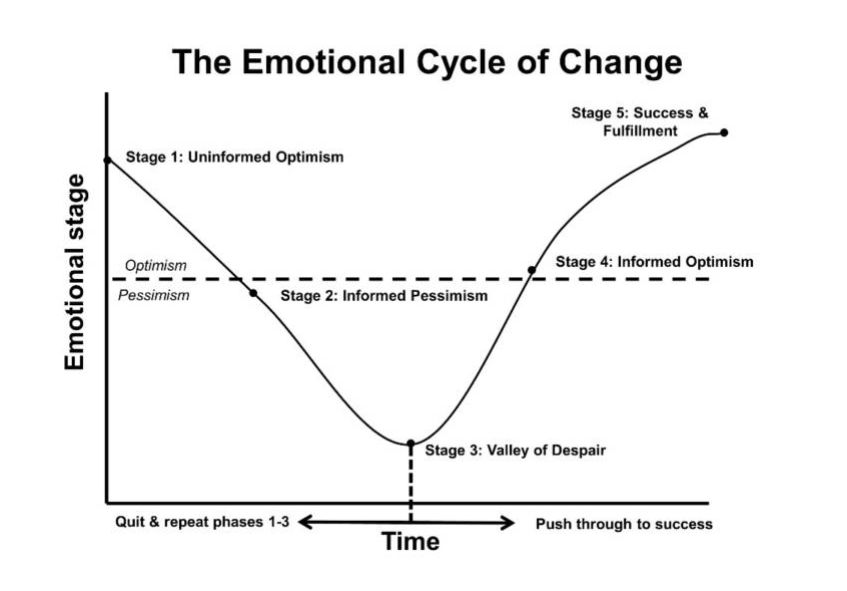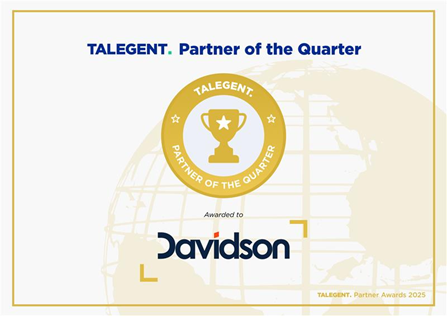Attracting the right talent is just the beginning
According to the ABS, 1.3 million people changed jobs for the year ending February 2022 and 1 in 5 of those, or 21%, had been in their job for less than a year. So, as a manager, how do you improve your chances of retaining the employee that you spent so long attracting?

Davidson Executive recruitment consultant, Cameron Norton, says that understanding the predictable cycle of emotions your newest employee faces, reacts to and deals with and putting in plans to support these can help.
According to psychologists Don Kelley and Daryl Conor, this cycle of emotions has five stages:

1. UNINFORMED OPTIMISM
The most exciting stage. At this stage, your new employee is imagining the value they’ll contribute; the calibre of the colleagues they’ll work with; and how much they’ll achieve in the first 90 days. Capitalize on that excitement. Have your new hire draw up a list of the things that attracted them to the company, team, or role. They’re going to need this list later when things don’t look so rosy.
2. INFORMED PESSIMISM
The honeymoon is over. Your employee realises they have more questions than answers; not everyone has been as collegial as expected; and they’re achieving less than expected. Assigning a mentor or buddy might be a wise decision at this point to help with any self-sabotaging thoughts, doubts and fears your new employee may have.
3. VALLEY OF DESPAIR
This is when most people give up. Even if they don’t do this publicly, you may find that privately, they’ve withdrawn. But you don’t want your new hire to be "most people," you want them to stay the course. In his book, The Coaching Habit, Michael Bungay Stanier recommends managers check-in regularly and dig deeper to understand what’s really going on. Questions such as ‘And what else?’ and ‘What’s the real challenge here for you?’ are great for this. This is also the time to encourage your employee to revisit the list they drew up in the Uninformed Optimism stage.
4. INFORMED OPTIMISM
Things are looking up. Your employee is feeling more positive, more like the person you hired. This may be a great time to match them with a newer hire so that they can cement their journey and share the knowledge and insights that helped bring them this far.
5. SUCCESS AND FULFILMENT
They aren’t going anywhere—they can see, feel and touch the difference they’ve made and the progress they’re making. And you can too.
Want to speak to a trusted expert on how to create connected experiences to drive higher levels of employee engagement and retention?
Contact us today!
Share this content






